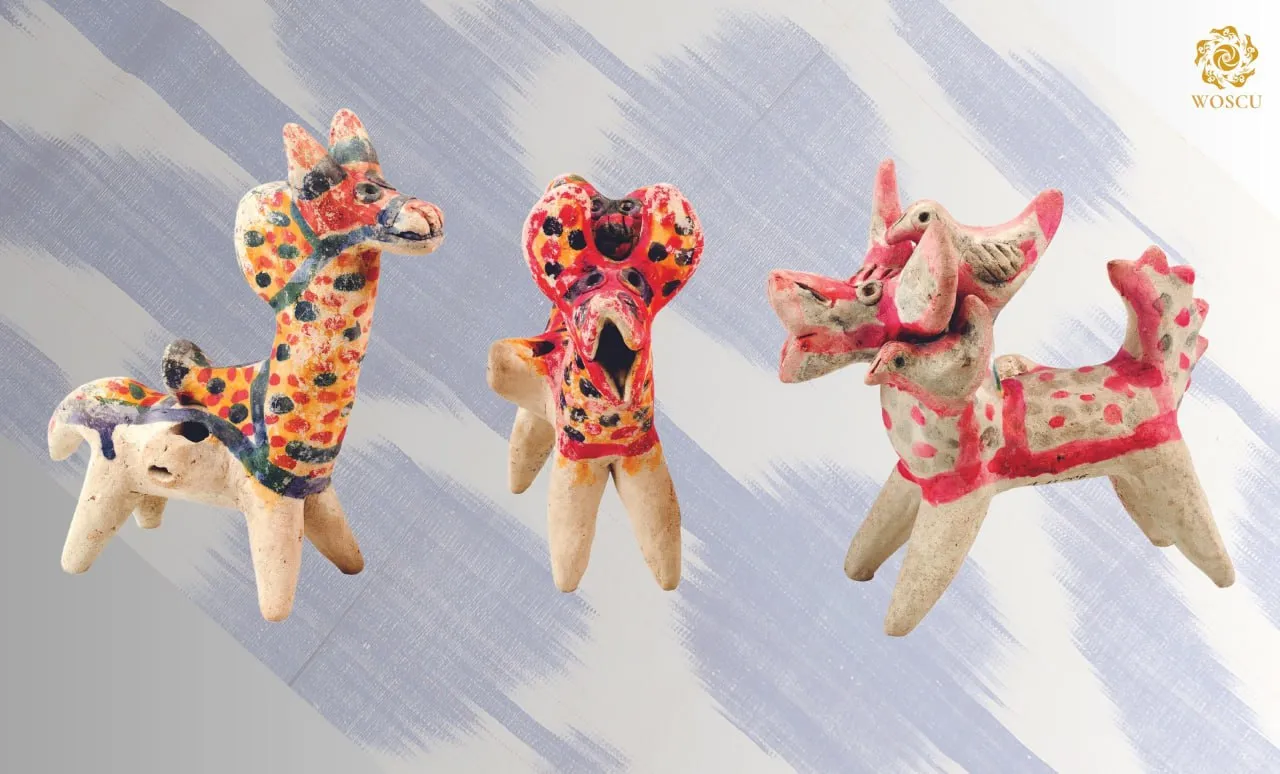
Ceramic vessels had not only practical value, but also decorative. They served to decorate the interiors of houses, especially in an urban environment, and were an integral part of wedding gifts.
For the production of pottery, local raw materials were used. These included heatproof (gilvata) and ferrous clay (zhusha), silica and silica sand. Clay was divided into two types by its properties. Soft malleable clay was used to produce tall vessels. Harder clay was used for flat plates.3 To obtain different colors, oxides of various metals were used. Iron oxide gave red brick and yellow colors; manganese oxide was used to obtain black, pink and purple colors; copper oxide was used for shades of green and turquoise; and cobalt oxide was used for the wide range of blue.
Ways of decorating ceramics also varied. Potters used brush painting, engraving, and stamping. In patterns mostly vegetal and geometric motifs can be found. Sometimes patterns depicted household items, such as knives and kumgans. The simplest geometric motifs were even and broken lines, which usually formed separate border strips. Wavy or zigzag lines (ilon izi) went mainly along the edge and neck of vessels. Among various vegetal motifs, images of various types of flowers and fruits were the commonest.
In addition to household utensils and tableware, people in Uzbekistan also produced small ceramic figurines that served as whistles. As a rule, whistles were in the form of real or imaginary birds and animals, for example dragons. Originally both men and women took part in the production of whistles, which were made for the New Year (Nauruz) celebrations in the spring, when they were sold at bazaars.
The oldest items in the collection of the Náprstek Museum are vessels of the late 19th century. These are mainly glazed items obtained in the 1970s and representing various kinds of traditional tableware (lagan, badiya, khurma), as well as clay whistles, the works of famous Uzbek potters. The museum documentation preserved the names of such masters as Makhmud Rakhimov and Khakim Satimov from Gurumsaray (Fergana Valley), Khamro Rakhimova from Uba (near Bukhara), and Rayimberdy Matchanov from Khanka (near Khiva).
Mavzu doirasida batafsil “O‘zbekiston madaniy merosi jahon to‘plamlarida" turkumidagi “Chexiya Respublikasi to‘plamlari” kitob-albomida (XVI jild) tanishishingiz mumkin.
Loyihaning bosh homiysi – Eriell-Group neft xizmatlari kompaniyasi.
